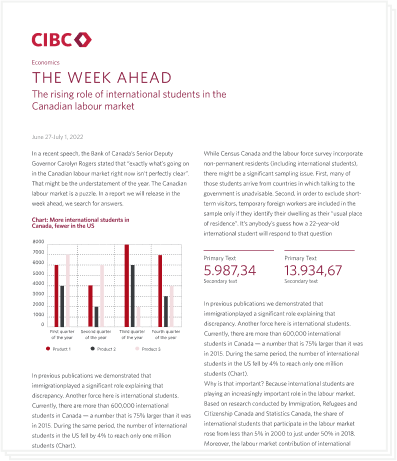

- Global electricity at its cleanest-ever
- G7: Amplifying guardrails for high integrity carbon markets
- What are the benefits of breaking-up the CCUS value chain?
- First-ever plastic-related disclosures for companies
- Indigenous inclusion in corporate frameworks for nature
- Certification offering to boost sustainability-linked debt
- Taking pulse – Is the U.S. IRA working?
- Ready-set-go for U.S. green steel
- Have your say on sustainable finance disclosures
- One step closer – Key EU carbon provisions adopted
- EIB insights into business climate change investments
- Canada’s emissions reduction goals - are we there yet?
- Could Canada's renewable ITCs hit a home run?
- New clean energy credit registry in Ontario
Global electricity at its cleanest-ever
The carbon intensity of global electricity generation fell to a record low of 436 gCO2/kWh in 2022, the cleanest-ever electricity, according to global energy think tank, Ember.
Record growth in wind and solar reached a 12% share in the global electricity mix – up from 10% in 2021 – which is now used in over 60 countries to generate more than 10% of their electricity. All clean electricity sources (including nuclear and renewables) reached 39% of global electricity – another new record high.
Investment in low carbon energy technology also surpassed USD $1 trillion in 2022 – matching the investment in fossil fuels for the first time. However, this must triple by the end of the decade to meet 1.5C. Key needs include lowering permitting times, solving grid connection bottlenecks and increasing financing into the sector – especially from high emitters and developing nations to help them transition from coal to clean.
Chart: Wind and solar hit 12% of global power; an era of fossil decline is about to begin


G7: Amplifying guardrails for high integrity carbon markets
G7 Ministers met in Japan last month to discuss climate, energy and the environment. In a joint communiqué, they recognized the important role of carbon pricing and carbon markets to enable net-zero emissions.
Underscoring the need to work with partners, within and beyond the G7, the Ministers announced new “Principles of High Integrity Carbon Markets”. These Principles outline strategies and standards for supply-side, demand-side and market infrastructure integrity that will improve the credibility, transparency, and overall confidence in these markets.
The Principles amplify safeguards above and beyond other initiatives, such as the Integrity Council for Voluntary Carbon Market’s Core Carbon Principles. As the uplift of these initiatives take root, it will enable the carbon markets to further mobilize public and private sector finance, unlock social and environmental co-benefits, and to deploy sustainable decarbonization technologies.
The G7 agenda included other aspects of global green transformation, including enabling climate resilient, circular, pollution-free, and nature-positive economies in an integrated manner.
What are the benefits of breaking-up the CCUS value chain?
A report by the International Energy Agency (IEA) reveals that the carbon capture, utilization and storage (CCUS) industry is responding to growth signals with a shift in business models.
A majority of CCUS projects to date have operated under a “full-chain” business model, which typically involves a single operator transporting CO2 from one capture facility to one injection site. But such models require high investment and increase the risks and liabilities for the developer.
As the CCUS industry scales-up, with over 140 new projects announced in 2022 alone, new “part-chain” business models are being adopted. This helps project developers to focus on a component of the value chain such as on capture, or transport or dedicated storage. Alongside this shift is the development of CCUS hubs which share infrastructure.
Breaking up the CCUS value chain is allowing new players to emerge, attracting participants beyond oil companies to include natural gas, chemical and engineering companies. It is also helping to spread costs and enable easier access to decarbonization solutions for emitters.
First-ever plastic-related disclosures for companies
CDP added a plastics module to their online reporting system that allows global companies to disclose their plastic-related impacts for the first time.
The module, now available for 2023 reporting, is aimed at high impact sectors like chemicals, fashion apparel, food and beverage, fossil fuel and packaging. Disclosures will cover the production and use of the most problematic plastics, like plastic polymers, durable plastics and plastic packaging, which will become useful to inform financial and procurement decisions.
Companies and their investors face significant business risks as plastic pollution rises. With growing international momentum to accelerate a circular economy, including the historic UN Treaty on plastic pollution in 2022, governments will be increasingly encouraged to include plastics in their mandatory disclosure regimes. To get ahead of these future policy developments, companies can disclose their plastic-related impacts to reduce risks to their business.
Indigenous inclusion in corporate frameworks for nature
In a new publication, the World Economic Forum (WEF) highlights that corporate frameworks for nature-based solutions – such as for the conservation and restoration of landscapes – need to be more inclusive of Indigenous peoples’ traditional knowledge and stewardship practices.
As corporate guidelines and standards begin to focus on the natural ecosystem, a key gap is that “non-Indigenous” criteria is often at odds with Indigenous worldviews and practices. Currently, a third of the Earth’s landscapes, holding 80% of terrestrial biodiversity, is stewarded by Indigenous peoples. WEF warns that a lack of Indigenous inclusion could ultimately inhibit the development, assessment and promotion of nature-based solutions.
Corporations should look at scaling existing Indigenous practices where possible, rather than adding on their own criteria for biodiversity conservation and more. A further WEF publication offers a set of principles and practices to inform corporate and investor actions in engaging with Indigenous peoples as “co-investment leaders” in nature-based solutions.
Register for the latest updates
Get exclusive access to content and market updates of your choice, directly to your inbox.
Certification offering to boost sustainability-linked debt
The Climate Bonds Initiative (CBI) announced a major extension to its Climate Bonds Standard and Certification Scheme.
The offering will now include certification of climate credentials at company-level. This would effectively extend certification to not just the corporate entity’s labelled debt, but to wider general-purpose debt and equity investment. CBI will designate two levels of certification – for entities, debt instruments or assets that are already aligned with 1.5C pathways, and for entities or sustainability-linked debt whose transition plans are aligned with 1.5C pathways by 2030.
The move will allow bonds issued by these firms to potentially automatically qualify as sustainable, which could boost the market for sustainability-linked debt products.
Taking pulse – Is the U.S. IRA working?
Over 100,000 new clean energy jobs were added to the U.S. economy in the first six months since the Inflation Reduction Act (IRA) was passed in August 2022, according to the World Economic Forum, with data from Climate Power. The new jobs are supporting clean energy manufacturing, including in wind, solar, batteries and electric vehicles.
The data also shows 94 new clean energy projects across 31 states, representing USD $90 billion in private sector investments, announced in the same period. Companies are clearly seizing on the certainty created by the bill and its incentives.
The IRA-fueled clean energy boom is also transforming the U.S. into one of the most attractive global markets for clean technologies – a label coveted by other jurisdictions. The European Union began trade talks with the U.S. in March on a Critical Minerals Agreement (CMA). If agreed, eligible materials extracted or processed in the EU could count toward IRA tax credit requirements. The U.S. recently concluded a similar CMA with Japan. Reciprocal initiatives will be a boon for businesses operating in the clean energy value chain.
Chart: New clean energy jobs since the passage of the Inflation Reduction Act


Ready-set-go for U.S. green steel
A report by RMI and the Energy Transitions Commission (ETC) finds that U.S. steelmakers can leverage a ‘first mover’ advantage to gain market share in global green steel production – a market projected to total USD $15 trillion though 2050.
Citing the viability of several green steel project types, the report discusses a number of factors that could boost green steelmaking in the U.S., such as: the increasing cost-competitiveness of green hydrogen-fueled production technologies; historic incentives generated by domestic policies; and growing demand to replace aging, fossil-intensive assets.
The report also advocates to strengthen the investment case for green steel, as some 70 low emissions primary steel mills are needed by 2030 to align the global steel industry’s pathway to 1.5C. Recommendations include developing partnerships across the value chain to focus efforts on industrial hubs and de-risk green infrastructure investments, and securing off-take agreements for low-emissions steel with clear timelines and tangible volumes.
Have your say on sustainable finance disclosures
The European Supervisory Authorities (ESA) announced amendments to the EU’s Sustainable Finance Disclosure Regulation (SFDR) in a bid to simplify layout, structure, language and more. A consultation (open until July 4, 2023) seeks responses on the proposed changes, including decarbonization targets of financial products.
SFDR mandates transparency for ESG-related product labelling, marketed by EU financial firms, as well as non-EU firms who market products into the EU. It took effect in January and holds firms accountable for their ESG claims to mitigate greenwashing risks. Asset managers marketing “ESG” or “Sustainability” in fund names have been particularly impacted.
Other regulatory bodies are considering similar measures. The Hong Kong Stock Exchange’s consultation (open until July 14, 2023), seeks feedback on its proposals to mandate all issuers to make climate-related disclosures in their ESG reports. The U.S. SEC will issue similar rules soon. The global effort to increase transparency into the sustainability of financial products will help investors to compare products based on sustainability risk.
One step closer – Key EU carbon provisions adopted
In April, the European Parliament adopted several key pieces of climate policy. Formal ratification is still needed from the EU Council.
Among the key provisions, the EU Emissions Trading System (ETS) is being reformed to fully integrate the aviation sector and extend coverage to marine shipping emissions. A parallel ETS market for road transport and buildings will also be implemented, from 2027.
The Carbon Border Adjustment Mechanism (CBAM) will require EU importers of non-EU goods in specific covered sectors to pay the difference in carbon price between the country of production and the price of carbon allowances in the EU. Reporting obligations would begin in October 2023, with implementation from 2026. Refer to our podcast episode, and February newsletter for more insights.
The EU’s focus on reducing carbon leakage will incentivize other countries to adopt or reinforce their own carbon pricing. Canada has been exploring a differently named ‘Border Carbon Adjustment’ (BCA) – watch this space.
EIB insights into business climate change investments
An investment survey, published by the European Investment Bank (EIB), provides insights into how businesses are responding to the energy crisis and the fast-changing business environment.
The survey finds EU firms are investing in tools to mitigate the impact of energy price increases and the pressure of setting carbon targets. For instance, 10% is the average share of investments that EU firms devote to energy efficiency vs. just 6% in the U.S. Additionally, 57% of EU firms have experienced economic losses and supply disruptions from extreme weather. To protect against these physical risks, they are investing in technological solutions and changing processes to increase resiliency, including investments in waste management, recycling and energy efficiency.
By investing in climate adaptation and mitigation measures, especially energy efficiency, firms can build protection against increased frequency of extreme climate events, reduce energy costs and accelerate net-zero emissions.
Canada’s emissions reduction goals - are we there yet?
Canada published its latest official greenhouse gas (GHG) inventory. This year’s report, based on data up to and including 2021, emissions were at 670 megatonnes of carbon dioxide equivalent (Mt CO2 eq), a net decrease of 62 Mt CO2 eq or 8.4% from 2005 levels.
While some sectors saw an increase in emissions since 2005 – such as oil and gas, agriculture and buildings – they were offset by emissions decreases in electricity, heavy industry and waste. Transport emissions have generally increased but dropped since 2020. Notably, emissions intensity for the entire Canadian economy (GHG per gross domestic product) declined by 29% since 2005.
Canada’s 2030 Emissions Reduction Plan, released last year, calls for emissions to be reduced by 40% – 45% from 2005 levels by 2030. According to a statement by Minister Guilbeault on April 18, we are now a ‘quarter of the way’ there. Policies have helped to reduce emissions in certain sectors; however, it may underscore the need for further targeted measures especially in oil and gas.
Chart: Breakdown of Canada’s greenhouse gas emissions by economic sector (2021)


Could Canada's renewable ITCs hit a home run?
Canada is regarded as a global leader for green energy incentives, according to Rystad Energy, a research and business intelligence company. Their assessment, which considers the impact of Budget 2023’s renewable energy investment tax credit (ITC), found that the tax break will raise the value of some green projects by more than 50%.
To model a tax reimbursement scenario, a fictional asset in Alberta was used, with a $45 per megawatt-hour (MWh) power purchase agreement that increases with inflation at 2% annually. A 250 MWh project could achieve $202 million after tax in full lifecycle net present value, an increase from $131 million before the ITC was announced.
The share of Canada’s grid power from renewable and nuclear sources today stands at 83%, and is expected to rise to 97% by 2050. This growth in capacity, combined with favorable fiscal incentives, positions Canada favorably, behind the U.S., as an attractive place for renewable developers.
New clean energy credit registry in Ontario
Ontario launched a clean energy credit (CEC) registry for the sale of credits that will help to fund clean electricity construction projects in the province.
The CEC registry will also help businesses to track and report their emissions goals, by demonstrating that their electricity has been sourced from clean resources, such as nuclear power, hydroelectric, wind, solar, and bioenergy. Each credit represents 1 MWh of clean energy from Ontario-based generation, intended to be purchased, claimed or retired by a load customer within Ontario. The registry, implemented by the Independent Electricity System Operator (IESO), will begin to sell credits in the summer of 2023.
The move will help the province to boost its competitiveness against other jurisdictions that offer CECs, such as the U.S. states of Ohio, Pennsylvania, Illinois, Indiana, Wisconsin and the New England states.
Sustainability across CIBC
At CIBC, we are focused on our goal to make sustainability a reality for our clients and the communities we serve. Whether through greening their balance sheet or providing sustainability advisory services, our objective is to help our clients become global leaders in environmental stewardship and sustainability.


Webcast
CIBC Perspectives: Sustainable finance – Quarterly update
Roman Dubczak, Deputy Chair, CIBC Capital Markets, hosted a discussion with our sustainability experts on the global sustainable finance market in the first quarter of 2023, current developments that are impacting the market, and what’s on the horizon.
Running time: 13 minutes
Events
Canada Growth Summit 2023
On April 27, 2023, Public Policy Forum (PPF) hosted its annual Canada Growth Summit 2023, an event that brings together businesses, government, academia and civil society. This year’s theme focused on Canada’s increased role in a world looking for stable, secure, and dependable allies.
CIBC Capital Markets’ Roman Dubczak, Deputy Chair, and the Hon. Lisa Raitt, Vice Chair and Managing Director, Global Investment Banking, shared their insights in a fireside chat: Is the U.S. eating Canada’s lunch on the great energy transition? To learn more, watch the video replay here.
Ms. Raitt was also recognized as an Honouree at PPF’s 35th Annual Testimonial Dinner Honour Roll, which pays tribute to distinguished leaders who have made outstanding contributions to the quality of public policy and good governance in Canada. Ms. Raitt joins 120 outstanding Canadians who have been honoured since 1988.
BNEF Summit New York 2023
From April 24-25, 2023, delegates from CIBC Capital Markets attended the BNEF Summit New York 2023 on global energy transition. This year’s theme underscored the need for finance, technology, and policy to work together to create a new world view for this era.
The role of sustainable finance featured among the panel topics. Discussions included building investor confidence to create a pathway for the metals and mining industry to raise capital; climate tech investment trends and the rise of venture capital and private equity financing over public market funding; and the carbon markets and increasing emphasis on carbon removal.
Chart of the Day: The net-zero investment gap
All countries will need to leverage a significant level of private investment to close the net-zero investment gap. Estimates suggest that climate finance needs to increase sixfold to over USD $4 trillion by 2030.


Key Contacts


















The CIBC logo and “CIBC Capital Markets” are trademarks of CIBC, used under license.





















